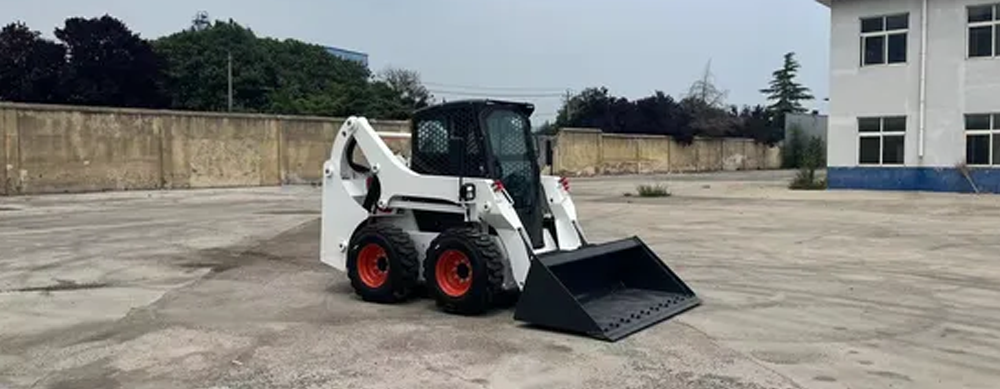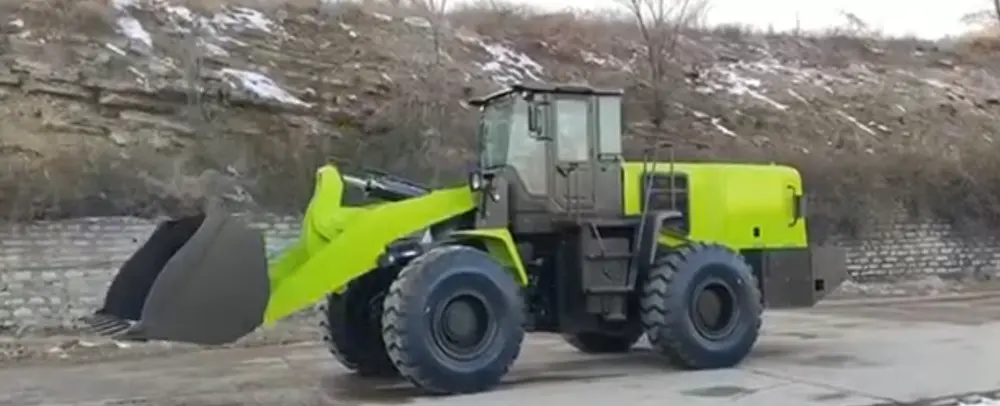Electric loaders are revolutionizing the construction and material handling industries. These eco-friendly machines feature a powerful electric motor that drives the loader's functions. With zero tailpipe emissions, they are perfect for indoor use in warehouses and factories, as well as outdoor operations in urban areas where air quality is a concern. The front-mounted bucket, similar to traditional loaders, can efficiently scoop up and transport materials like soil, gravel, and debris. Their quiet operation reduces noise pollution, and advanced battery technology provides sufficient power and runtime. The operator's cab is ergonomically designed, ensuring comfort and clear visibility for enhanced productivity.
| Parameters | Unit | ||
| Rated load | kg | 750 | |
| Tipping load | kg | 1500 | |
| Operating weight | kg | 3140 | |
| Maximum breakout force | kN | 18 | |
| Engine | Manufacturer | Xinchai | |
| Model | 4D27G31 | ||
| Rated power | Hp/kw | 49.3/36.8 | |
| Rated speed | rpm | 2500 | |
| Cooling mode | Water-cooling | ||
| Performance parameter | Operation mode | Mechanical & multi-function electronic control | |
| Tire standard | 10-16.5 | ||
| Maximum speed | Km/h | 14 | |
| Hydraulic system | Hydraulic flow rate | L/min | 62.5 |
| Optional large flow | -- | ||
| Hydraulic pressure | bar | 200 | |
| Maximum operating height | mm | 3878 | |
| Bucket hinge pin height | mm | 3057 | |
| Cabin top height | mm | 1960 | |
| Maximum horizontal height of bucket bottom | mm | 2851 | |
| Length without bucket | mm | 2533 | |
| Length with bucket | mm | 3310 | |
| Toppling angle | ° | 40 | |
| Maximum unloading height | mm | 2375 | |
| Ground-bucket angle | ° | 30 | |
| Rotating angle of bucket at highest point | ° | 83 | |
| Unloading distance | mm | 575 | |
| Wheel base | mm | 1027 | |
| Departure angle | ° | 25 | |
| Ground clearance | mm | 183 | |
| Front radius of turning circle (without bucket ) | mm | 1183 | |
| Front radius of turning circle (with bucket) | mm | 2066 | |
| Rear radius of turning circle | mm | 1564 | |
| Length of tail | mm | 1005 | |
| Wheel track | mm | 1380 | |
| Tire edge width | mm | 1640 | |
| Bucket edge width | mm | 1800 | |
| Bucket capacity (stacking height) | m3 | 0.45 | |
| Bucket capacity (tiling) | m3 | 0.35 | |
| Diesel tank capacity | L | 80 | |
| Capacity of hydraulic oil tank | L | 60 | |

1. The chassis is a sturdy, welded-steel structure that forms the foundation of the loader. It provides the necessary rigidity to support the entire machine and withstand the forces exerted during loading operations.
2. Bucket: The front-mounted bucket is typically made of high-strength steel. It comes in various shapes and sizes to suit different material handling requirements.
3. Lift Arms: These are connected to the front of the chassis and are powered by hydraulic cylinders. They are responsible for raising and lowering the bucket.
4. Hydraulic Pump: In an electric loader, the hydraulic pump is usually electrically driven. It pressurizes the hydraulic fluid, which in turn powers the movements of the lift arms, bucket, and other hydraulic functions.
5. Hydraulic Cylinders: These cylinders convert the hydraulic pressure into mechanical force. They control the motion of the lift arms and bucket, ensuring precise operation.
6. Hoses and Valves: High-quality hoses carry the hydraulic fluid between components, while valves regulate the flow and direction of the fluid.
7. Electric Motor: The heart of the electric loader is its electric motor. It provides the power to drive the hydraulic pump and move the loader itself.
8. Drive System: The drive system transfers power from the electric motor to the wheels. It can include components like inverters, controllers, and gearboxes.
9. The battery pack is a critical component that stores the electrical energy needed to power the loader. It typically consists of multiple lithium-ion or lead-acid batteries.

1. Determine the volume of materials you need to move regularly. The bucket capacity of electric loaders varies. If you're handling large amounts of material like sand for landscaping or debris for a construction site, a loader with a larger bucket capacity is preferable.
2. Check the maximum weight the loader can lift. This is crucial if you plan to lift heavy objects such as pallets of bricks or large boulders.
3. For indoor applications such as in warehouses or factories, an electric loader's zero-emissions and quiet operation are significant advantages. For outdoor use, especially in areas with rough terrains, ensure the loader has sufficient ground clearance and durable tires.
4. If you'll be operating in tight spaces like small warehouses or urban construction sites, choose a loader with a small footprint and a tight turning radius.
5. The power of the electric motor determines the loader's performance. Look for a loader with sufficient kilowatts of power to handle the workload. Battery life is crucial. Consider the runtime of the battery on a single charge and how it aligns with your work requirements.
6. The hydraulic system powers the movement of the lift arms and bucket. Check the flow rate and pressure of the hydraulic pump. A higher flow rate enables faster operation, while adequate pressure ensures the loader can handle heavy loads.

Electric loaders are a green alternative to traditional fuel-powered loaders. They produce zero tailpipe emissions, which is highly beneficial for both indoor and outdoor use.
One of the significant advantages of electric loaders is their quiet operation. The absence of a noisy internal combustion engine means less noise pollution. This is especially valuable in noise-sensitive areas like residential neighborhoods, hospitals, and schools.
Electric motors provide instant torque, enabling quick and responsive operation. They offer smooth acceleration and precise speed control, which is crucial for tasks such as carefully scooping and placing materials.
Modern electric loaders are equipped with advanced battery packs. Lithium-ion batteries are commonly used due to their high energy density, which provides longer runtimes between charges.
The operator's cab of an electric loader is designed with comfort and functionality in mind. It provides excellent visibility of the work area through large windows and well-placed mirrors. The controls are intuitive, usually with joystick-based operation for the lift arms and bucket.
Electric loaders can be equipped with a variety of attachments, similar to their fuel-powered counterparts. They can use attachments such as forks for pallet handling, augers for drilling, and brush cutters for land-clearing.

